
The Kihansi spray toad is currently extinct in the wild after its habitat was impacted by a dam. Photo by: Rhett A. Butler.
So, here’s the good news: a mass extinction, the world’s sixth, is still preventable. But the bad news: if species currently threatened with extinction vanish—even over the next thousand years—homo-sapiens will be the first single species responsible for a mass extinction. Comparing today’s current extinction crisis with the big five that occurred in the past, a new study in Nature finds that while the situation is dire, the choice is ultimately up to humanity.
“If you look only at the critically endangered mammals—those where the risk of extinction is at least 50 percent within three of their generations—and assume that their time will run out, and they will be extinct in 1,000 years, that puts us clearly outside any range of normal, and tells us that we are moving into the mass extinction realm,” explains lead author Anthony D. Barnosky, UC Berkeley professor of integrative biology.
Currently, there are 3,565 species listed as Critically Endangered by the International Union for the Conservation of Nature (IUCN) Red List, however the IUCN has only evaluated around 2.7% of the world’s species.
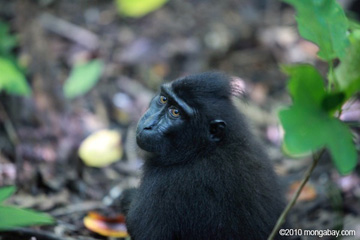 Native to the Indonesian island of Sulawesi, the black-crested macaque (Macaca nigra) is classified by the IUCN Red List as Critically Endangered. Photo by: Rhett A. Butler. |
Barnosky added that if species classified as Endangered and Vulnerable go extinct as well, the world could suffer a sixth mass extinction within 300 to 2,200 years. A recent analysis by the International Union for the Conservation of Nature (IUCN) found that 20% of the world’s vertebrates were currently threatened with extinction. Most of the world’s invertebrates have not even been surveyed for such threats.
According to Barnoksy, 1-2% of the world’s species have vanished ” in the groups we can look at clearly”, implying that there is still time. But extinctions are still happening faster than they did even during past mass extinctions.
“Just because the magnitude is low compared to the biggest mass extinctions we’ve seen in a half a billion years doesn’t mean to say that they aren’t significant,” coauthor Charles Marshall, UC Berkeley professor of integrative biology said. “Even though the magnitude is fairly low, present rates are higher than during most past mass extinctions.”
Looking at mammals, the study found that current extinction rates were far higher than average: at least 80 mammals have gone extinct in the past 500 years, however, researchers found that looking at the fossil record showed that an average of less than 2 mammals going extinct every million years.
“It looks like modern extinction rates resemble mass extinction rates, even after setting a high bar for defining ‘mass extinction,'” Barnosky commented.
Some groups are even more endangered than mammals. According to the IUCN, 33% of amphibians, 27% of reef-building corals, 29% of conifers, and 52% of cycads are currently threatened with extinction.
Life is currently being diminished by a multitude of human impacts including deforestation, habitat loss, pollution, over-exploitation for food and traditional medicines, invasive species, and climate change.
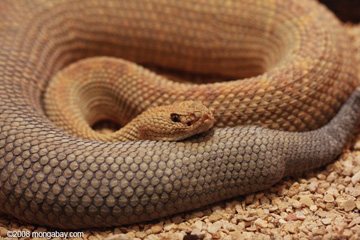 The Critically Endangered Aruba island rattlesnake at the Bronx Zoo. Photo by: Rhett A. Butler. |
“The modern global mass extinction is a largely unaddressed hazard of climate change and human activities,” said H. Richard Lane, program director in the National Science Foundation’s Division of Earth Sciences, which funded the research. “Its continued progression, as this paper shows, could result in unforeseen—and irreversible—negative consequences to the environment and to humanity.”
Biodiversity, the richness of life on Earth, provides a number of services to humanity such as pollination, pest control, medicinal discoveries, food production, fisheries, carbon sequestration, freshwater, and, of course, the immeasurable value of sharing the world with a wide-variety of weird and wonderful life-forms.
“Our findings highlight how essential it is to save critically endangered, endangered and vulnerable species,” Barnosky added. “With them, Earth’s biodiversity remains in pretty good shape compared to the long-term biodiversity baseline. If most of them die, even if their disappearance is stretched out over the next 1,000 years, the sixth mass extinction will have arrived.”
CITATION: Anthony D. Barnosky, Nicholas Matzke, Susumu Tomiya,
Guinevere O. U. Wogan, Brian Swartz, Tiago B. Quental, Charles Marshall,
Jenny L. McGuire, Emily L. Lindsey, Kaitlin C. Maguire,
Ben Mersey, and Elizabeth A. Ferrer . Has the Earth’s sixth mass extinction already arrived?. Nature. 471. 51-57. 3-3-2011. doi:10.1038/nature09678.

The Sumatran orangutan (Pongo abelii) is considered Critically Endangered with approximately 7,000 left, representing an 80% decline in 75 years. Photo by: Rhett A. Butler.

A female leather-back sea turtle lays a precarious nest. The world’s largest marine turtle in the world, the leather-back is listed as Critically Endangered by the IUCN Red List. Photo by: Tiffany Roufs.

A black-and-white ruffed lemur (Varecia variegata) feeds on a tamarind in Madagascar. Their population has dropped by 80% in 27 years. This species is also listed as Critically Endangered. Photo by: Rhett A. Butler.
Related articles
Parks key to saving India’s great mammals from extinction
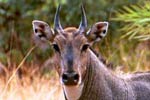 (02/24/2011) Krithi Karanth grew up amid India’s great mammals—literally. Daughter of conservationist and scientist Dr. Ullas Karanth, she tells mongabay.com that she saw her first wild tigers and leopard at the age of two. Yet, the India Krithi Karanth grew up in may be gone in a century, according to a massive new study by Karanth which looked at the likelihood of extinction for 25 of India’s mammals, including well-known favorites like Bengal tigers and Asian elephants, along with lesser known mammals (at least outside of India) such as the nilgai and the gaur. The study found that given habitat loss over the past century, extinction stalked seven of India’s mammals especially: Asiatic lions, Bengal tigers, wild dogs (also known as dholes), swamp deer, wild buffalo, Nilgiri Tahr, and the gaur. However, increasing support of protected areas and innovative conservation programs outside of parks would be key to saving India’s wildlife in the 21st Century.
(02/24/2011) Krithi Karanth grew up amid India’s great mammals—literally. Daughter of conservationist and scientist Dr. Ullas Karanth, she tells mongabay.com that she saw her first wild tigers and leopard at the age of two. Yet, the India Krithi Karanth grew up in may be gone in a century, according to a massive new study by Karanth which looked at the likelihood of extinction for 25 of India’s mammals, including well-known favorites like Bengal tigers and Asian elephants, along with lesser known mammals (at least outside of India) such as the nilgai and the gaur. The study found that given habitat loss over the past century, extinction stalked seven of India’s mammals especially: Asiatic lions, Bengal tigers, wild dogs (also known as dholes), swamp deer, wild buffalo, Nilgiri Tahr, and the gaur. However, increasing support of protected areas and innovative conservation programs outside of parks would be key to saving India’s wildlife in the 21st Century.
Top 25 most endangered turtles: Asian species in crisis
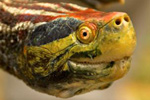 (02/23/2011) Surviving hundreds of millions of years on Earth have not saved turtles from facing extinction at human hands. A new report by the Wildlife Conservation Society (WCS) and the Turtle Conservation Coalition, identifies the world’s 25 most imperiled turtles, including one that is practically assured extinction: ‘Lonesome George’ the last Abdington Island tortoise in the world. The list includes four turtle species from South and Central America, three from Africa, and one from Australia. But Asia is the hotbed for turtles in trouble with 17 of the top 25 species, or 68%. The numbers are even more alarming if one looks only at the top ten: eight of the top ten are in Asia, and six of these in China.
(02/23/2011) Surviving hundreds of millions of years on Earth have not saved turtles from facing extinction at human hands. A new report by the Wildlife Conservation Society (WCS) and the Turtle Conservation Coalition, identifies the world’s 25 most imperiled turtles, including one that is practically assured extinction: ‘Lonesome George’ the last Abdington Island tortoise in the world. The list includes four turtle species from South and Central America, three from Africa, and one from Australia. But Asia is the hotbed for turtles in trouble with 17 of the top 25 species, or 68%. The numbers are even more alarming if one looks only at the top ten: eight of the top ten are in Asia, and six of these in China.
Worldwide search for ‘lost frogs’ ends with 4% success, but some surprises
 (02/16/2011) Last August, a group of conservation agencies launched the Search for Lost Frogs, which employed 126 researchers to scour 21 countries for 100 amphibian species, some of which have not been seen for decades. After five months, expeditions found 4 amphibians out of the 100 targets, highlighting the likelihood that most of the remaining species are in fact extinct; however the global expedition also uncovered some happy surprises. Amphibians have been devastated over the last few decades; highly sensitive to environmental impacts, species have been hard hit by deforestation, habitat loss, pollution, agricultural chemicals, overexploitation for food, climate change, and a devastating fungal disease, chytridiomycosis. Researchers say that in the past 30 years, its likely 120 amphibians have been lost forever.
(02/16/2011) Last August, a group of conservation agencies launched the Search for Lost Frogs, which employed 126 researchers to scour 21 countries for 100 amphibian species, some of which have not been seen for decades. After five months, expeditions found 4 amphibians out of the 100 targets, highlighting the likelihood that most of the remaining species are in fact extinct; however the global expedition also uncovered some happy surprises. Amphibians have been devastated over the last few decades; highly sensitive to environmental impacts, species have been hard hit by deforestation, habitat loss, pollution, agricultural chemicals, overexploitation for food, climate change, and a devastating fungal disease, chytridiomycosis. Researchers say that in the past 30 years, its likely 120 amphibians have been lost forever.
Study: REDD could save species from extinction, if well-funded
(12/01/2010) The burgeoning global program REDD+ (Reduced Emissions from Deforestation and Forest Degradation) could do more than mitigate climate change, according to a new study in Conservation Letters by scientists with Conservation International (CI). Analyzing a sample of 2,500 forest animals, including mammals, birds and amphibians, researchers found that REDD+ could reduce the rate of extinction among these species by 46-82% over five years. The wide range in the study’s findings depends on the amount of funds devoted to REDD+: more funds means greater forest preservation and, thereby, less extinction.
Ad warning of mass extinction appears in Times Square
(11/24/2010) An advertisement warning holiday pedestrians about mass extinction—and asking for their help—first appeared in Times Square this week. The ad which flashes on CBS’s Super LED Screen between 7th and 8th avenues was created by US conservation organization, the Center for Biological Diversity.
Will biodiversity agreement save life on Earth?

(11/07/2010) On Friday, October 29th, 193 member nations of the Convention on Biological Diversity (CBD) reached a possibly landmark agreement on saving the world’s suffering biodiversity in Nagoya, Japan. The agreement was especially notable after nations failed—by all accounts—to live up to the goals from the previous CBD agreement, including stemming the global loss of biodiversity by 2010. According to scientists, the world’s species continue to vanish at mass-extinction rates due to habitat loss, deforestation, overconsumption, pollution, climate change, and invasive species. To addresses this crisis the new CBD agreement sets out 20 goals for 2020. But given the global challenges in saving the world’s species and the lack-of-teeth in agreement (it is strictly voluntary), will the CBD make a difference or in ten years time will goals be again unmet and life on planet Earth worse off than ever? To answer this mongabay.com turned to a number of experts in the conservation world.
The march to extinction accelerates
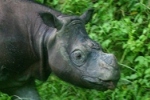
(10/26/2010) A fifth of the world’s vertebrate species (i.e. mammals, birds, reptiles, amphibians, and fish) are threatened with extinction, according to a massive new study by the International Union for the Conservation of Nature (IUCN); and the situation is worsening for the world’s wildlife: on average 52 species of mammals, birds, and amphibians move one category closer to extinction every year (the IUCN Red List categorizes species as Least Concern, Near Threatened, Vulnerable, Endangered, Critically Endangered, Extinct in the Wild, and then Extinct). However, the news isn’t all bad. The study found that conservation action does work: in the first analysis of its kind, researchers found that the global biodiversity decline would have been 18% worse if not for conservation attention, “nonetheless,” the authors—174 scientists from 38 countries—write, “current conservation efforts remain insufficient to offset the main drivers of biodiversity loss.” According to the study, these drivers include agricultural expansion, logging, over-exploitation of species, and invasive species.
Losing nature’s medicine cabinet

(10/04/2010) In all the discussions of saving the world’s biodiversity from extinction, one point is often and surprisingly forgotten: the importance of the world’s species in providing humankind with a multitude of life-saving medicines so far, as well as the certainty that more vital medications are out there if only we save the unheralded animals and plants that contain cures unknown. Already, species have provided humankind everything from quinine to aspirin, from morphine to numerous cancer and HIV-fighting drugs. “As the ethnobotanist Dr. Mark Plotkin commented, the history of medicine can be written in terms of its reliance on and utilization of natural products,” physician Christopher Herndon told mongabay.com. Herndon is co-author of a recent paper in the journal Biotropica, which calls for policy-makers and the public to recognize how biodiversity underpins not only ecosystems, but medicine.
Mass extinction fears widen: 22 percent of world’s plants endangered
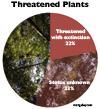
(09/28/2010) Scientific warnings that the world is in the midst of a mass extinction were bolstered today by the release of a new study that shows just over a fifth of the world’s known plants are threatened with extinction—levels comparable to the Earth’s mammals and greater than birds. Conducted by the Royal Botanic Gardens, Kew; the Natural History Museum, London; and the International Union for the Conservation of Nature (IUCN), the study is the first time researchers have outlined the full threat level to the world’s plant species. In order to estimate overall threat levels, researchers created a Sampled Red List Index for Plants, analyzing 7,000 representative species, including both common and rare plants.
21% of Africa’s freshwater plants and animals threatened
(09/02/2010) 21 percent of African freshwater plant and animal species are threatened with extinction, according to a five year assessment of 5,167 freshwater species by 200 scientists.
If Madagascar’s biodiversity is to be saved, international community must step up

(07/27/2010) The international community’s boycott of environmental aid to Madagascar is imperiling the island’s unique and endangered wildlife, according to a new report commissioned by the US Agency for International Development’s (USAID) Bureau of Africa. International aid to the desperately poor nation slowed to a trickle after a government coup last year, including a halt on environmental funding from the US government. Since then the island has experienced an environmental crisis: illegal loggers and traders began decimating protected areas, and the wildlife trade, including hunting endangered lemurs for bushmeat, took off.
New UN panel to focus on saving life on Earth
(06/14/2010) In South Korea last week 230 delegates from 85 nations approved a new UN science panel focusing on saving life on Earth, known as the Intergovernmental Science Policy Platform on Biodiversity and Ecosystem Services (IPBES). The panel, which is to be modeled off of the Intergovernmental Panel on Climate Change (IPCC), is meant to bridge the gap between scientific understanding of biodiversity loss and the policy decisions necessary to stop it.
Study points to global snake decline
(06/09/2010) A number of reports over the last decade have shown amphibians, lizards, fish, and birds facing steep population declines across species and continents, providing further evidence that the planet is undergoing a mass extinction. Now a new study in Biology Letters adds another group of animals to that list: snakes.
‘No hope now remains’ for the Alaotra grebe
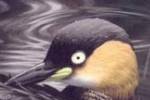
(05/31/2010) World governments have missed their goal of stemming biodiversity loss by this year, instead biodiversity loss has worsened according to scientists and policy-makers, and a little rusty-colored bird, the Alaotra grebe (Tachybaptus rufolavatus) is perhaps a victim of this failure to prioritize biodiversity conservation. Native to a small region in Madagascar, the grebe has been declared extinct by BirdLife International and the IUCN Red List due to several factors including the introduction of invasive carnivorous fish and the use of nylon gill-nets by local fishermen, which now cover much of the bird’s habitat, and are thought to have drowned diving grebes. The bird was also poached for food.